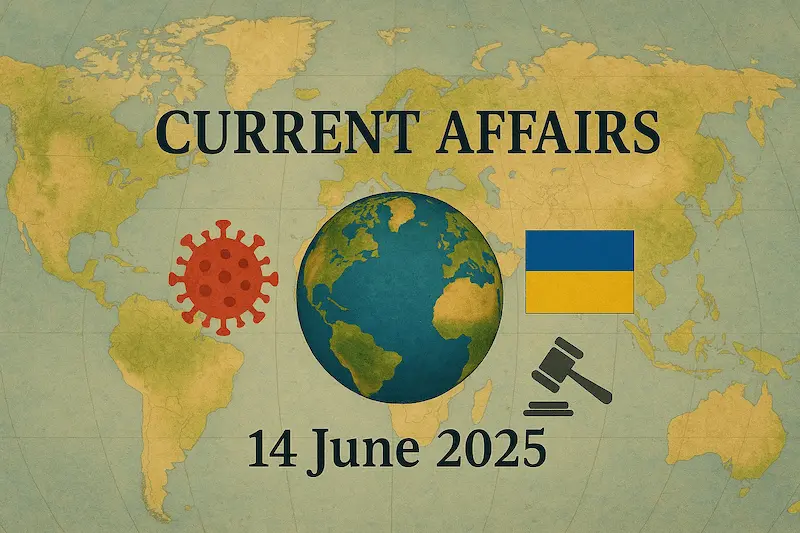1.Passage Exercise (PASSEX) in the North Arabian Sea–Defence & Security

Why in News?
The Indian Navy and the United Kingdom’s Royal Navy recently conducted a Passage Exercise (PASSEX) in the North Arabian Sea, enhancing joint operational capabilities and naval interoperability.
Background Context
- PASSEX refers to short, tactical naval exercises carried out between navies of friendly nations when their ships meet at sea.
- The North Arabian Sea is geopolitically important due to its proximity to West Asia and its role in facilitating global energy trade.
- Indian Navy’s INS Tabar, a stealth guided missile frigate, participated alongside the UK’s HMS Prince of Wales, a modern aircraft carrier.
Why it Matters
- Demonstrates India’s strategic maritime engagement under the SAGAR doctrine (Security and Growth for All in the Region).
- Enhances India’s Blue Water Navy profile — relevant for both prelims and mains (Defence, Security, and International Relations).
- Reinforces maritime preparedness in a region critical to India’s economic and energy security.
Broader Implications
- Supports a rules-based international maritime order in the Indo-Pacific.
- Strengthens India-UK bilateral defence relations, especially as the UK pivots towards Asia post-Brexit.
- Demonstrates the readiness to secure Sea Lines of Communication (SLOCs) vital for global trade and energy flow.
Quick Facts / Key Points
- Exercise Type: Bilateral, short-term operational exercise.
- Indian Asset: INS Tabar (Stealth Frigate)
- UK Asset: HMS Prince of Wales (Aircraft Carrier)
- Activities included: Joint tactical maneuvers, coordinated helicopter operations, combat readiness drills.
- Region of Conduct: North Arabian Sea, a vital trade and energy corridor.
- Strategic Aim: Boost interoperability and showcase maritime strength.
Summary
The recent PASSEX in the North Arabian Sea marks a growing defence synergy between India and the UK, strengthening operational coordination in a region of vital strategic and economic importance. Through joint exercises involving advanced warships and tactical drills, both navies reaffirmed their commitment to maritime security and a stable Indo-Pacific region. For HAS aspirants, this development is relevant under topics such as maritime security, India’s foreign relations, and Indo-Pacific geopolitics.
Exam Connect – Possible Questions
Prelims
1. Which of the following statements regarding PASSEX are correct?
- It is a multilateral naval exercise conducted annually.
- The recent PASSEX between India and the UK took place in the Bay of Bengal.
- PASSEX involves interoperability exercises between friendly navies.
- INS Tabar participated in the PASSEX exercise with the UK.
A.1 and 2 only
B. 3 and 4 only
C.1, 2 and 3 only
D. All of the above
Answer: B. 3 and 4 only
Explanation: PASSEX is a bilateral, short-duration naval drill, and the current one occurred in the North Arabian Sea, not the Bay of Bengal.
Mains
1. Discuss the strategic significance of the North Arabian Sea and examine how bilateral naval exercises like PASSEX enhance India’s maritime security architecture. (150–200 words)
2. Navigating the Legal and Ethical Crisis in the Higher Judiciary-Polity
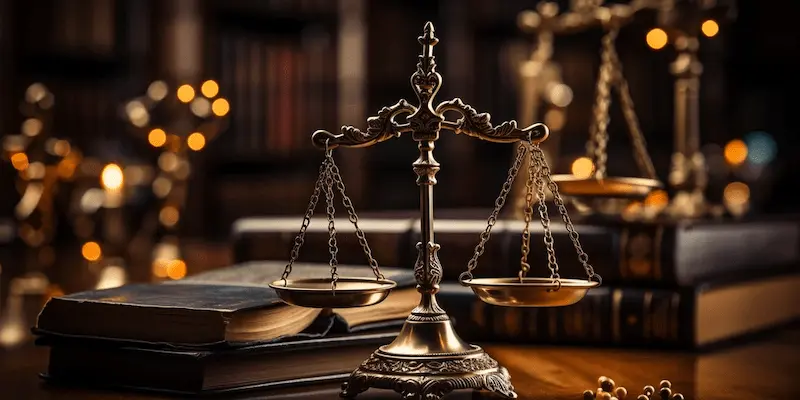
Why in News?
Allegations of misconduct involving Justice Yashwant Varma, a sitting High Court judge, have reignited debates around judicial accountability, highlighting the constitutional and ethical challenges of ensuring accountability in India’s higher judiciary without compromising its independence.
Background Context
The incident involved burnt currency found at the residence of Justice Yashwant Varma, prompting an in-house inquiry and discussions around potential impeachment.
- The judiciary is constitutionally protected to remain independent from executive and legislative interference, yet accountability mechanisms are limited and often opaque.
- The central dilemma: “Who judges the judges?” — balancing autonomy and oversight.
Why it Matters
- Relevant to Polity and Constitution (Paper II) and Ethics in Governance (Paper IV).
- Questions around judicial conduct, constitutional safeguards, and reform of oversight mechanisms are key themes in administrative and legal discourse.
- Events like this underline the need for institutional transparency, which is a core concern in public administration and ethics.
Broader Implications
- Judicial Independence vs Accountability: India’s democratic structure depends on a judiciary that is both independent and answerable to the people.
- Public Trust: Misconduct undermines the public’s trust in the judicial system — a pillar of constitutional democracy.
- Comparative Models: Nations like Canada, Australia, and the US have structured judicial councils and legislative oversight, which India lacks in full form.
- Need for Reform: Experts call for legislation that enables independent preliminary investigations, with safeguards to prevent misuse.
Quick Facts / Key Points
- Articles 124 & 217: Govern appointment and removal of Supreme Court and High Court judges. Removal requires proven misbehavior/incapacity.
- Judges (Protection) Act, 1985: Offers limited legal immunity and outlines provisions for addressing judicial misconduct.
- Veeraswami Judgment (1991): Prosecution of judges requires prior sanction from the Chief Justice of India.
- In-house Mechanism: Internal, confidential procedure with no statutory basis; criticized for lack of transparency.
- Impeachment Process: Extremely rare and politically difficult — requires a special majority in Parliament.
- Global Best Practices: Judicial Councils or ethics commissions with defined procedures and public reports.
Summary
The recent case involving Justice Yashwant Varma highlights a critical fault line in India’s judicial system — the lack of a robust, transparent mechanism for judicial accountability. While constitutional safeguards protect judicial independence, current mechanisms fail to instill public trust in cases of alleged misconduct. The incident underscores the need for reform that respects both the independence and integrity of the judiciary, through clearer legal frameworks and more transparent oversight systems.
Exam Connect – Possible Questions
Prelims
1. With reference to judicial accountability in India, consider the following statements:
- Judges of the High Court can be removed by the Chief Justice of India through the in-house mechanism.
- The Judges (Protection) Act, 1985, allows for criminal prosecution of judges without any special procedure.
- As per the Veeraswami judgment, prior consent of the Chief Justice of India is required before prosecuting a judge.
- India has a statutory judicial council that investigates judicial misconduct.
Which of the statements given above is/are correct?
A. 1 and 2 only
B. 3 only
C. 2 and 4 only
D. 1, 3, and 4 only
Answer: B. 3 only
Explanation:
- Statement 1 is incorrect: Judges cannot be removed via in-house mechanisms — removal requires parliamentary process.
- Statement 2 is incorrect: Special procedures are needed for prosecution.
- Statement 3 is correct per the Veeraswami case.
- Statement 4 is incorrect: India lacks a statutory judicial council like some other countries.
Mains
1. In the context of recent judicial controversies, critically analyze the challenges of ensuring judicial accountability in India while maintaining judicial independence. Suggest institutional reforms to address these issues. (200–250 words)
3.Global Gender Gap Report 2025-Polity
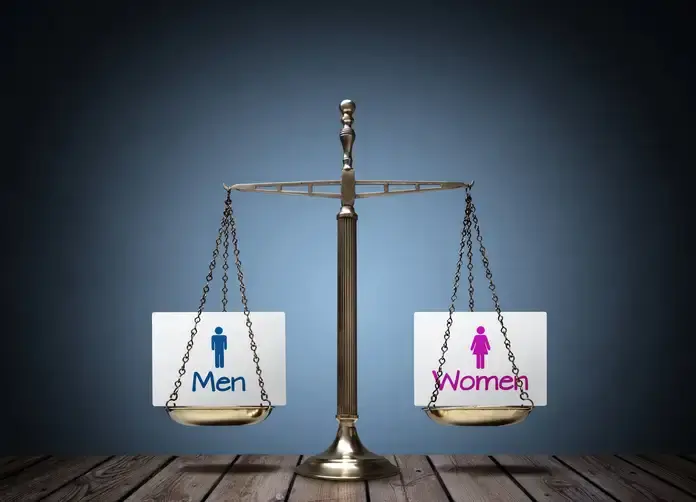
Why in News?
The World Economic Forum (WEF) released its Global Gender Gap Report 2025, ranking India 131st out of 148 countries, a drop of two positions from the previous year, with a gender parity score of 64.1%.
Background Context
- The Global Gender Gap Index, introduced by the WEF in 2006, measures the gender gap across four dimensions:
- Economic Participation and Opportunity
- Educational Attainment
- Health and Survival
- Political Empowerment
- It provides a benchmark for tracking gender-based disparities globally and assessing countries’ progress toward gender equality.
Why it Matters
- This report is highly relevant to Social Justice (HAS Mains Paper II), Women and Development, and International Reports (Prelims).
- Women empowerment and gender-based disparity are central to India’s development agenda and are frequently asked in GS and Essay papers.
- Helps understand policy gaps in health, education, and political inclusion — important for administrators and policy planners.
Broader Implications
- South Asia continues to lag, with India ranking below neighbors like Bangladesh and Nepal.
- Progress in education and employment contrasts with setbacks in political representation, highlighting imbalanced development.
- Reflects the need for legislative reforms, gender budgeting, and robust implementation of women-centric schemes.
- The report underscores regional inequality, with Europe dominating the top rankings and countries in the Global South (especially West Asia and Africa) struggling with gender disparities.
Quick Facts / Key Points
- India’s Rank (2025): 131st / 148 countries
- India’s Overall Score: 64.1% parity
- Economic Participation & Opportunity: Improved to 40.7% (↑0.9%)
- Political Empowerment: Declined — women in Parliament dropped from 14.7% to 13.8%
- Education: Literacy and tertiary enrollment scored 97.1% parity
- Top Country: Iceland (Rank 1, 92.6% parity) for 16th consecutive year
- Bottom Performers: Pakistan, Sudan, Chad, Iran
- Report Publisher: World Economic Forum (Annual Report since 2006)
Summary
India’s declining rank in the Global Gender Gap Report 2025 highlights persistent gender inequalities, especially in political empowerment. Despite significant gains in education and employment, the fall in female parliamentary representation reflects systemic challenges. The report is a valuable tool for policymakers to measure gender disparities, prioritize reforms, and work toward more inclusive governance. For HAS aspirants, it provides insights into global gender indices and their intersection with Indian socio-political realities.
Exam Connect – Possible Questions
Prelims
1. Consider the following statements about the Global Gender Gap Index:
- It is published by the United Nations Women annually.
- It measures gender disparities in four dimensions: health, education, economy, and politics.
- In 2025, India ranked among the top 50 countries globally.
- Iceland has been the top-ranked country for over a decade.
Which of the statements given above are correct?
A. 1 and 3 only
B.2 and 4 only
C. 1, 2, and 3 only
D. 2 and 3 only
Answer: B. 2 and 4 only
Explanation:
- Statement 1 is incorrect: The report is published by World Economic Forum, not UN Women.
- Statement 2 is correct: The index measures gaps in economy, education, health, and politics.
- Statement 3 is incorrect: India ranked 131st, not in the top 50.
- Statement 4 is correct: Iceland has led the ranking for 16 years.
Mains
1.Despite improvements in educational attainment and economic participation, India continues to face challenges in achieving gender parity, particularly in political empowerment. Discuss the key barriers and suggest policy interventions to address these issues. (200–250 words)
4.Shipki La Pass Opened to Domestic Tourists-Geography
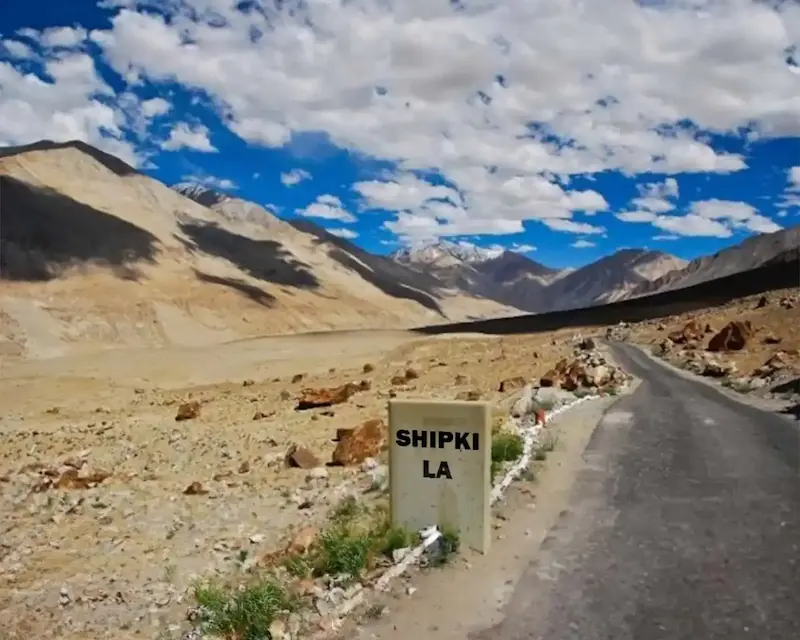
Why in News?
The Shipki La Pass, a high-altitude mountain pass in Kinnaur district of Himachal Pradesh, has been opened to Indian tourists. Previously restricted due to security reasons, the pass now promises to boost tourism and economic activity in the region.
Background Context
- Shipki La is a motorable mountain pass situated at an altitude of 3,930 meters on the India-China border.
- It lies in the tribal district of Kinnaur, known for its strategic location and cultural links to Tibet.
- The Sutlej River (Langqen Zangbo in Tibet) enters Indian territory through this pass, making it hydrologically and geopolitically significant.
Why it Matters
- Geography (Paper I): Location, elevation, and strategic significance of mountain passes in Himachal Pradesh.
- Himachal GK: Local connectivity, tourism, and economic implications for border districts like Kinnaur and Lahaul-Spiti.
- Security and Economy (Paper III): India-China border infrastructure and the role of tourism in boosting tribal economies.
- Culture & History (Paper IV): Historic trade and cultural links with Tibet through Shipki La.
Broader Implications
- Strategic Importance: Recognized by the Indo-Tibetan Border Police (ITBP) post-1962 Sino-Indian war; vital for surveillance and defense.
- Cultural Revival: Opening the pass reconnects the region to its historical and cultural Tibetan ties.
- Economic Impact: Boosts border tourism, enhances road connectivity, and promotes rural livelihoods through homestays, local crafts, and eco-tourism.
- Environmental Caution: As tourism increases, there is a need for sustainable development models to protect the fragile Himalayan ecosystem.
Quick Facts / Key Points
- Location: Kinnaur district, Himachal Pradesh
- Altitude: 3,930 meters
- River: Sutlej River enters India here from Tibet
- Border: India-China (Himachal-Tibet Autonomous Region)
- Original Name: Pema La (Shared Gate)
- Renamed: Post-1962, due to strategic designation by the ITBP
- Tourism Goal: To boost economic development in Kinnaur and Lahaul-Spiti, which together share a 240 km border with China
Summary
The opening of Shipki La Pass to Indian tourists marks a significant step toward revitalizing Himachal Pradesh’s border economy and reconnecting with its historical trade routes. Positioned on the India-China frontier at 3,930 meters, this high-altitude pass serves both strategic and cultural functions. By allowing controlled domestic tourism, the initiative seeks to uplift the tribal economy, foster cross-border heritage, and assert India’s border presence, while also raising the need for sustainable tourism in the ecologically sensitive Himalayan terrain.
Exam Connect – Possible Questions
Prelims
1. Consider the following statements regarding the Shipki La Pass:
- It is located in the district of Lahaul-Spiti and connects India with Bhutan.
- The Sutlej River enters India through this pass.
- The pass is currently open for international trade and unrestricted foreign tourism.
- Shipki La was historically known as Pema La.
Which of the statements given above are correct?
A. 1 and 3 only
B. 2 and 4 only
C. 1, 2, and 4 only
D. 2, 3, and 4 only
Answer: B. 2 and 4 only
Explanation:
- Statement 1 is incorrect: It is located in Kinnaur, not Lahaul-Spiti, and borders China, not Bhutan.
- Statement 2 is correct: The Sutlej River enters India here.
- Statement 3 is incorrect: The pass is open to domestic tourists only, not foreign tourists or open trade.
- Statement 4 is correct: It was historically known as Pema La.
Mains
1. Discuss the strategic, cultural, and economic significance of Shipki La Pass in Himachal Pradesh. How can the development of border tourism be balanced with environmental sustainability in such ecologically fragile regions? (200–250 words)
5.Trump’s Tariffs and a U.S.-India Trade Agreement-International Relations

Why in News?
Former U.S. President Donald Trump’s imposition of unilateral tariffs—ranging from 10% to 135% on imports from over 100 countries—sparked legal challenges within the U.S. and disrupted trade negotiations, particularly with India. These developments highlighted the tension between national protectionism and international trade commitments.
Background Context
- Under the guise of national emergency due to trade deficits, Trump imposed steep tariffs, bypassing regular legislative and WTO frameworks.
- India, a major service exporter to the U.S., was affected by tariffs on steel and aluminum, straining the trade dialogue.
- The case reached the U.S. Court of International Trade, where American businesses challenged the tariffs as unconstitutional and inconsistent with U.S. trade laws.
- Though initially ruled against, the decision was temporarily stayed by an appeals court.
Why it Matters
- Relevant to International Trade (HAS Mains Paper III), World Economy, and India–US bilateral relations.
- Demonstrates how domestic political decisions in powerful countries impact India’s trade policy and diplomatic positioning.
- Also touches on constitutional checks and balances — relevant to comparative polity and governance topics.
- Useful for essay writing on topics like “Protectionism vs Multilateralism” or “Challenges to Global Economic Order.”
Broader Implications
- Erosion of WTO Norms: Trump’s actions showcased the rise of economic unilateralism, undermining multilateral institutions like the WTO.
- India’s Strategic Challenges:
- Navigating a volatile trade environment
- Protecting sectors like digital services and IT outsourcing
- Managing visa restrictions (especially H-1B visas)
- Future of U.S.-India Trade: India must advocate for:
- Tariff elimination
- Digital trade liberalization
- A rules-based trade regime
Quick Facts / Key Points
- Tariff Range: 10%–135%
- Legal Basis: Declared under “national emergency,” though not backed by actual economic data (e.g., U.S. had a services surplus with India)
- Affected Indian Sectors: Steel, aluminum, IT services
- Key Legal Development: U.S. Court of International Trade initially invalidated tariffs; appeal pending
- India’s Approach: Emphasis on multilateralism, bilateral talks, and economic diplomacy
Summary
Donald Trump’s tariff policy marked a major shift in U.S. trade strategy, rooted in economic nationalism and unilateralism. The fallout from these measures not only disrupted global supply chains but also strained U.S.-India trade relations, particularly affecting steel and digital service sectors. Legal pushback within the U.S. itself illustrates the internal tensions around executive overreach. For India, the episode underscores the importance of diversifying trade partnerships, pursuing multilateral reforms, and strategically negotiating future trade deals with major economies like the U.S.
Exam Connect – Possible Questions
Prelims
1. Consider the following statements regarding U.S.–India trade relations in the context of recent tariff disputes:
- India was subjected to U.S. tariffs on steel and aluminum under a WTO decision.
- The U.S. justified the tariffs on national emergency grounds due to trade deficits.
- India has a trade surplus with the U.S. in goods and a deficit in services.
- The digital services sector is a key concern for India in bilateral trade negotiations.
Which of the statements given above are correct?
A. 1 and 3 only
B. 2 and 4 only
C. 2, 3, and 4 only
D. 1, 2, and 4 only
Answer: B. 2 and 4 only
Explanation:
- Statement 1 is incorrect: The tariffs were imposed unilaterally by the U.S., not under WTO decision.
- Statement 2 is correct: The U.S. invoked national emergency and trade deficit justifications.
- Statement 3 is incorrect: India has a surplus in services, not a deficit.
- Statement 4 is correct: The digital services sector is central to India’s trade priorities.
Mains
1. Analyze the impact of unilateral tariff measures by major economies on India’s trade and economic diplomacy. How should India recalibrate its trade strategy in light of growing global protectionism? (200–250 words)
6.AviList 2025: World’s First Unified Global Bird Checklist-Environment
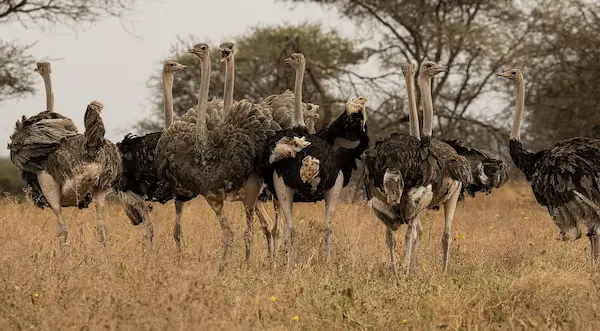
Why in News?
The Working Group on Avian Checklists launched AviList 2025, the world’s first unified and standardized global bird checklist. The initiative aims to streamline global bird classification and bolster conservation planning and ecological research.
Background Context
- Previously, multiple bird classification systems like the IOC World Bird List and Clements Checklist created inconsistencies in species naming and taxonomy.
- AviList resolves this by creating a single, consensus-based taxonomy accepted globally.
- Developed collaboratively by:
- BirdLife International
- Cornell Lab of Ornithology
- Avibase
- International Ornithologists’ Union (IOU)
- American Ornithologists’ Society (AOS)
Why it Matters
- Relevant for Environment & Ecology (Paper III) and Biodiversity Conservation themes.
- Offers important material for Prelims on international organizations and biodiversity tools.
- Bird classification and conservation are part of India’s commitments to global biodiversity targets under CBD, SDGs, and IPBES.
- India’s own avian biodiversity (1300+ species) makes tools like AviList essential for field-level conservation work in protected areas like Great Himalayan National Park.
Broader Implications
- Conservation Impact: Clarifies species boundaries—vital for assessing extinction risk, habitat needs, and protection priorities.
- Global Research Collaboration: Enables consistent data sharing among ornithologists, policymakers, and citizen scientists across countries.
- Technology and Transparency: Hosted online at www.avilist.org; offers justifications for each taxonomic change, making science more accessible and transparent.
- Dynamic Nature: Annual updates ensure AviList evolves with new scientific discoveries and genetic evidence.
Quick Facts / Key Points
- Launch Date: June 12, 2025
- Species Covered: 11,131 bird species
- Taxonomic Scope: 19,879 subspecies, 2,376 genera, 252 families, 46 orders
- Accessibility: Freely available online; updated annually
- Developed By: Global collaboration (BirdLife, Cornell Lab, IOU, Avibase, AOS)
- Purpose: Standardize bird taxonomy for research, conservation, education
- Living Document: Adapts to ongoing research and taxonomic changes
- India’s Significance: Home to several endemic species—standardized taxonomy aids in clear identification and conservation
Summary
AviList 2025 is a landmark in global biodiversity science, offering the first unified global checklist of birds. With over 11,000 species covered and backed by leading ornithological institutions, it eliminates taxonomic confusion and strengthens international collaboration in avian research and conservation. For India—with its rich bird diversity—AviList is a crucial step forward in conservation planning, research coordination, and policy development aligned with global biodiversity goals.
Exam Connect – Possible Questions
Prelims
1. Consider the following statements regarding AviList 2025:
- AviList is an initiative of the United Nations Environment Programme (UNEP).
- It replaces multiple bird classification systems with a single, globally accepted taxonomy.
- AviList includes detailed justifications for taxonomic changes and is updated annually.
- AviList focuses only on endangered bird species.
Which of the statements given above are correct?
A.1 and 4 only
B. 2 and 3 only
C.1, 2, and 3 only
D. 2, 3, and 4 only
Answer: B. 2 and 3 only
Explanation:
- Statement 1 is incorrect: AviList is developed by ornithological organizations, not UNEP.
- Statement 2 is correct: It consolidates various checklists into one unified taxonomy.
- Statement 3 is correct: AviList provides justifications and annual updates.
- Statement 4 is incorrect: It covers all bird species, not just endangered ones.
Mains
1. What is AviList 2025? Discuss its role in improving global biodiversity conservation and its relevance for a country like India with high avian diversity. (200–250 words)
7.Birth of a Mouse Deer at Indira Gandhi Zoological Park-Environment

Why in News?
The Indira Gandhi Zoological Park (IGZP) in Visakhapatnam announced the successful birth of a mouse deer (Indian chevrotain)—a small, shy, and ecologically significant species. This marks a notable success in the zoo’s captive breeding and conservation initiatives.
Background Context
The Indian mouse deer, also known as the spotted chevrotain (Moschiola indica), is the smallest deer species found in India.
- Due to its elusive nature and small size, it remains poorly observed in the wild, despite playing an essential ecological role.
- Known for its nocturnal and solitary behavior, it is especially vulnerable to habitat loss and predation.
Why it Matters
- Relevant for Environment & Ecology (Paper III) and Wildlife Conservation topics.
- Highlights species conservation efforts under Schedule I of the Wildlife Protection Act.
- Important for Prelims due to unique characteristics, diet, distribution, and IUCN status.
- Connects to broader themes like biodiversity hotspots, zoo-based conservation, and ecological balance.
Broader Implications
- Seed Dispersal Role: Vital for forest regeneration and health.
- Food Web Connection: Prey species for various carnivores, supporting biodiversity.
- Conservation through Captive Breeding: A model for protecting lesser-known but ecologically crucial species.
- Public Awareness: Such events help raise awareness about obscure, endangered species and their role in ecosystems.
Quick Facts / Key Points
- Scientific Name: Moschiola indica
- Common Name: Indian Mouse Deer / Indian Spotted Chevrotain
- Habitat: Dense forests in peninsular India, especially Western & Eastern Ghats, parts of central India
- Distribution: Endemic to Indian subcontinent; distinct species (Moschiola meminna) found in Sri Lanka
- Diet: Omnivorous—eats fruits, roots, leaves, and occasionally insects and small animals
- Unique Traits:
- Smallest deer species in India
- Three-chambered stomach (unlike the typical four-chambered stomach in other ruminants)
- Tusk-like canines in males
- Conservation Status:
- IUCN Red List: Least Concern
- Wildlife Protection Act, 1972: Schedule I (highest protection)
Summary
The successful breeding of a mouse deer at Indira Gandhi Zoological Park signals progress in ex-situ conservation of this elusive and ecologically vital species. As the smallest Indian deer, the mouse deer plays key roles in seed dispersal and as part of the forest food chain. Its unique biological features and restricted distribution underscore the need for sustained habitat protection and public awareness. The event aligns with national conservation priorities under the Wildlife Protection Act and contributes to broader biodiversity goals.
Exam Connect – Possible Questions
Prelims
1. Consider the following statements regarding the Indian Mouse Deer (Spotted Chevrotain):
- It is classified as Critically Endangered on the IUCN Red List.
- It has a typical four-chambered ruminant stomach.
- It is listed under Schedule I of the Wildlife Protection Act, 1972.
- It is endemic to the Indian subcontinent.
Which of the statements given above are correct?
A. 1 and 2 only
B. 3 and 4 only
C. 1, 2 and 4 only
D. 2, 3 and 4 only
Answer: B. 3 and 4 only
Explanation:
- Statement 1 is incorrect: It is listed as Least Concern, not Critically Endangered.
- Statement 2 is incorrect: It has a three-chambered stomach, not four.
- Statement 3 is correct: It is protected under Schedule I.
- Statement 4 is correct: It is endemic to the Indian subcontinent.
Mains
1. Explain the ecological significance of lesser-known species like the Indian mouse deer. How do captive breeding programs contribute to their conservation? (200–250 words)
8. India Elected Vice President of the International Organization for Marine Aids to Navigation (IALA)-International Relations

Why in News?
India has been elected as Vice President of the International Organization for Marine Aids to Navigation (IALA) during the 2nd Session of the IALA Council held in Nice, France. This marks a significant recognition of India’s growing leadership in the field of maritime safety and navigational systems.
Background Context
- IALA was originally established in 1957 as a Non-Governmental Organization (NGO) to standardize marine navigation aids globally.
- In 2024, it was formally converted into an Intergovernmental Organization (IGO) following a convention ratified by 34 countries, thereby strengthening its legal and operational role.
- India has been an active member since 1957, and this leadership role signifies its continued influence in maritime governance.
Why it Matters
- Relevant to International Relations (Paper II) and Internal Security & Maritime Governance (Paper III).
- Highlights India’s role in multilateral institutions, particularly those dealing with strategic maritime domains like the Indian Ocean and Indo-Pacific.
- For Prelims, details about headquarters, mandate, and membership are frequently tested under international organizations.
- Important for Essay and Ethics papers under topics like “Global Cooperation and Public Good” or “India as a Global Maritime Power.”
Broader Implications
- Maritime Safety Leadership: Reinforces India’s role in setting international standards for aids to navigation, such as lighthouses, buoys, and radar beacons.
- Strategic Maritime Interest: Enhances India’s credibility in securing Sea Lines of Communication (SLOCs) and addressing maritime challenges like piracy, navigation hazards, and marine pollution.
- Technological Collaboration: Promotes exchange of new technology in vessel monitoring and smart navigation systems.
- Blue Economy: Facilitates safer maritime trade routes, crucial for India’s coastal development, fisheries, and offshore energy sectors.
Quick Facts / Key Points
- Full Name: International Organization for Marine Aids to Navigation (IALA)
- Established: 1957 (NGO); became IGO in 2024
- Headquarters: Saint-Germain-en-Laye, France
- India’s Membership: Since 1957; now elected as Vice President (2025)
- Total Members: Over 200 (includes 80 national authorities and 60 commercial firms)
- Functions:
- Harmonization of maritime aids to navigation
- International cooperation and information exchange
- Promotion of maritime safety and environmental protection
- Recent Council Session: Held in Nice, France (2025)
Summary
India’s election as Vice President of IALA reinforces its growing stature in international maritime governance. With a mandate to standardize global marine navigation systems, IALA plays a key role in ensuring safe, efficient, and environmentally secure maritime transit. As a longstanding member since 1957, India’s leadership role reflects its proactive participation in multilateral forums and strategic efforts to secure maritime infrastructure critical to global trade and regional stability in the Indo-Pacific.
Exam Connect – Possible Questions
Prelims
1. Consider the following statements regarding the International Organization for Marine Aids to Navigation (IALA):
- IALA became an Intergovernmental Organization in 2024.
- It is headquartered in Nice, France.
- India is a founding member of IALA.
- IALA focuses on maritime navigation systems and environmental safety.
Which of the statements given above are correct?
A. 1 and 4 only
B. 1, 2 and 3 only
C. 1, 3 and 4 only
D. All of the above
Answer: C. 1, 3 and 4 only
Explanation:
- Statement 1 is correct: IALA became an IGO in 2024.
- Statement 2 is incorrect: IALA is headquartered in Saint-Germain-en-Laye, not Nice.
- Statement 3 is correct: India has been a member since 1957.
- Statement 4 is correct: IALA promotes maritime navigation and environmental safety.
Mains
1. India’s election as Vice President of the International Organization for Marine Aids to Navigation (IALA) reflects its growing leadership in maritime affairs. Discuss the strategic and economic importance of such multilateral maritime roles for India. (200–250 words)

